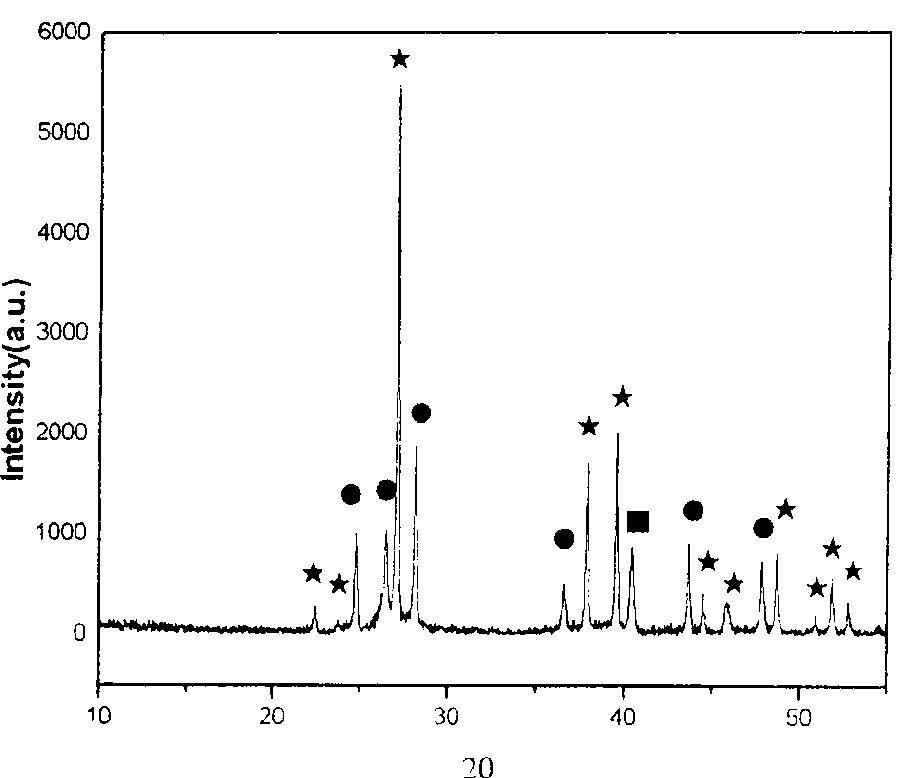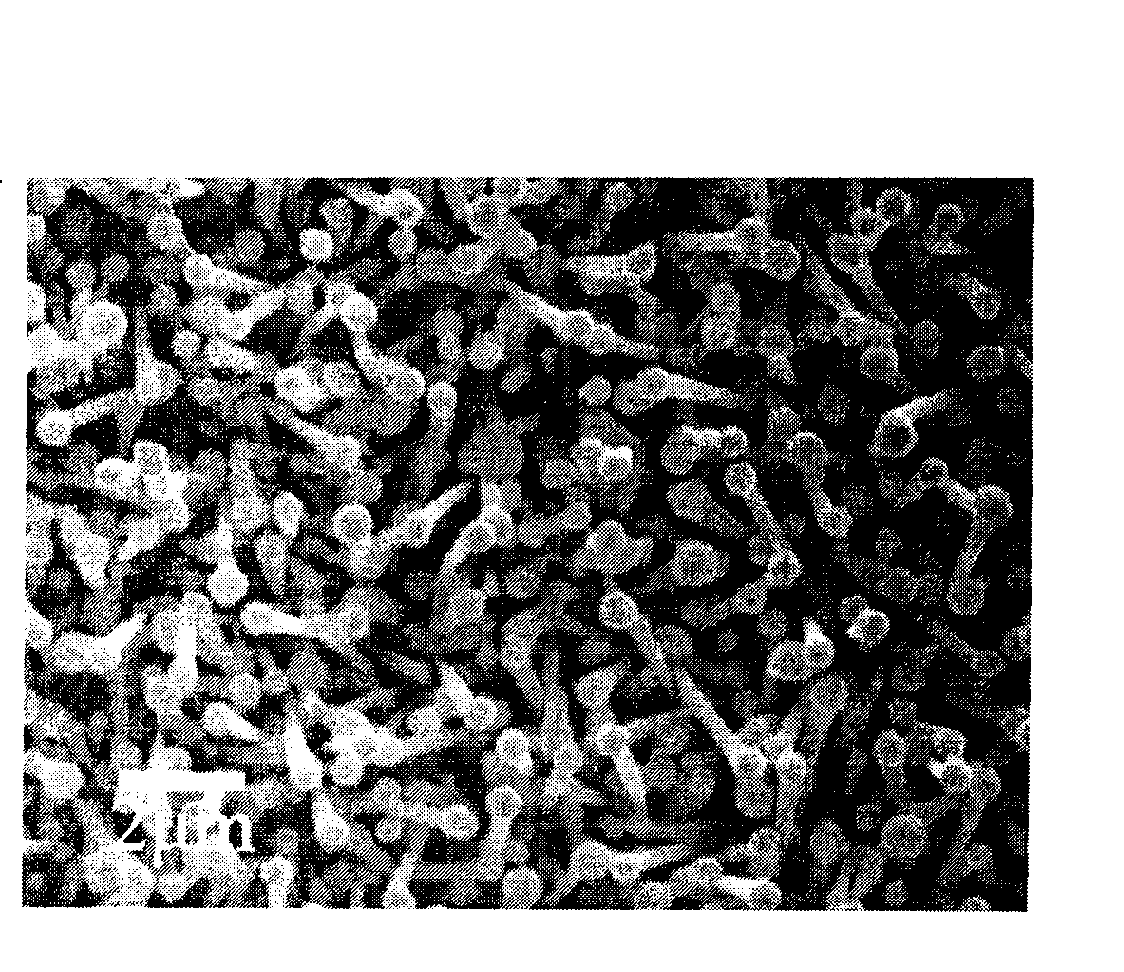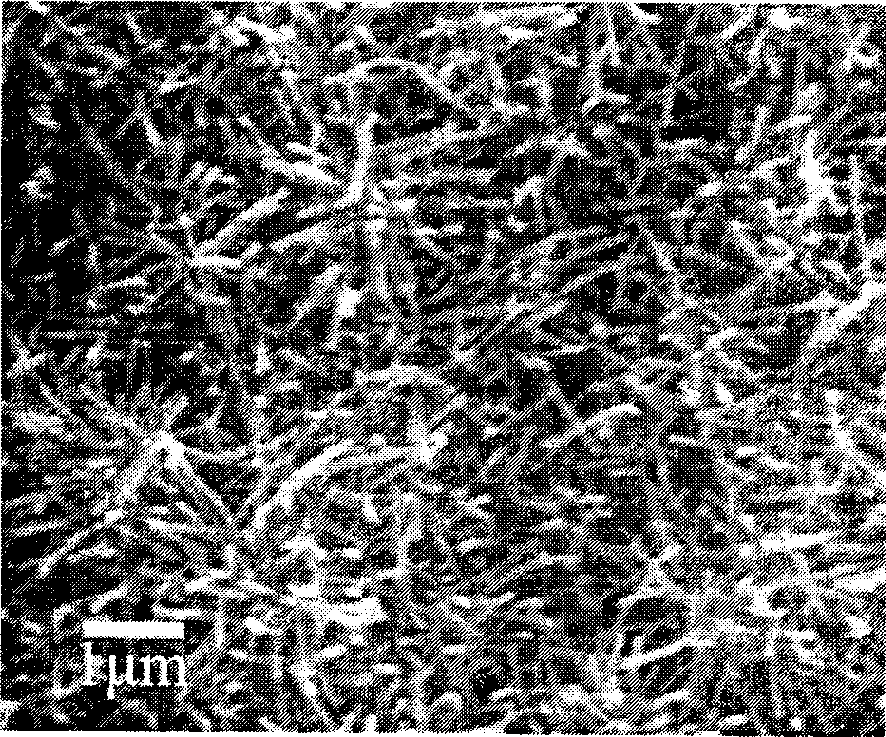CdS nano rod growth method by catalyst-assisted and vacuum heat evaporation
A vacuum evaporation and catalyst technology, applied in the direction of cadmium sulfide, etc., can solve the problems of not preparing cadmium sulfide nanorods, difficult nanostructures, and difficult control, etc., to avoid impurities and other by-products, large deposition area, and simple method Effect
- Summary
- Abstract
- Description
- Claims
- Application Information
AI Technical Summary
Problems solved by technology
Method used
Image
Examples
Embodiment 1
[0017] Use high-purity CdS powder (99.5%) as raw material and high-purity metal bismuth powder as catalyst. After the two are uniformly mixed at 1mol:0.125mol, the powder is directly placed on the molybdenum sheet heater, and another molybdenum sheet is used as the lining. The bottom is placed about 5mm above the evaporation source. When the vacuum reaches 8×10 -3 After Pa, the evaporation chamber was sealed, and the current was gradually increased to 130 A at a current increase rate of 2.5 A / min and then kept for 10 minutes. There are yellow deposits on the bottom surface. The surface morphology of the substrate deposits observed by SEM is pin-shaped nanorods, the bulk of which is 500-800nm particles, and the diameter of the nanorods connected to the particles is gradually reduced from 300-500nm, and the rod length is 3-5μm, such as figure 2 . The XRD analysis results show that the main phase of the product is hexagonal CdS, and the catalyst is hexagonal Bi, such as fi...
Embodiment 2
[0019] Using high-purity CdS powder (99.5%) as raw material, high-purity metal bismuth powder as a catalyst, after the two are uniformly mixed in a ratio of 1mol:0.04mol, the obtained powder is directly placed on the molybdenum sheet heater, and the ITO glass is The substrate was placed approximately 2 cm above the evaporation source. When the vacuum reaches 8×10 -3 After Pa, the evaporation chamber was sealed, and the current was gradually increased to 130A at a current increase rate of 2.5A / min and then kept for 15 minutes. There are yellow deposits on the substrate surface. The surface morphology of substrate deposits observed by SEM is nanorods with a length of 1-2 μm and a diameter of 50-60 nm, such as image 3 .
Embodiment 3
[0021] Use high-purity CdS powder (99.5%) as raw material and high-purity metal bismuth powder as catalyst. After the two are uniformly mixed at a ratio of 1mol:0.312mol, the powder is directly placed on the molybdenum heater, and the silicon wafer is used as the substrate. Place about 1cm above the evaporation source. When the vacuum reaches 8×10 -3 After Pa, the evaporation chamber was sealed, and the current was gradually increased to 130A at a current increase rate of 2.5A / min for 15 minutes. There are yellow deposits on the substrate surface. The surface morphology of the sediment observed by SEM is a uniform distribution of nanorods with a length of 5-10 μm and a diameter of 100-200 nm, such as Figure 4 .
PUM
| Property | Measurement | Unit |
|---|---|---|
| length | aaaaa | aaaaa |
| length | aaaaa | aaaaa |
| length | aaaaa | aaaaa |
Abstract
Description
Claims
Application Information
 Login to View More
Login to View More - R&D
- Intellectual Property
- Life Sciences
- Materials
- Tech Scout
- Unparalleled Data Quality
- Higher Quality Content
- 60% Fewer Hallucinations
Browse by: Latest US Patents, China's latest patents, Technical Efficacy Thesaurus, Application Domain, Technology Topic, Popular Technical Reports.
© 2025 PatSnap. All rights reserved.Legal|Privacy policy|Modern Slavery Act Transparency Statement|Sitemap|About US| Contact US: help@patsnap.com



